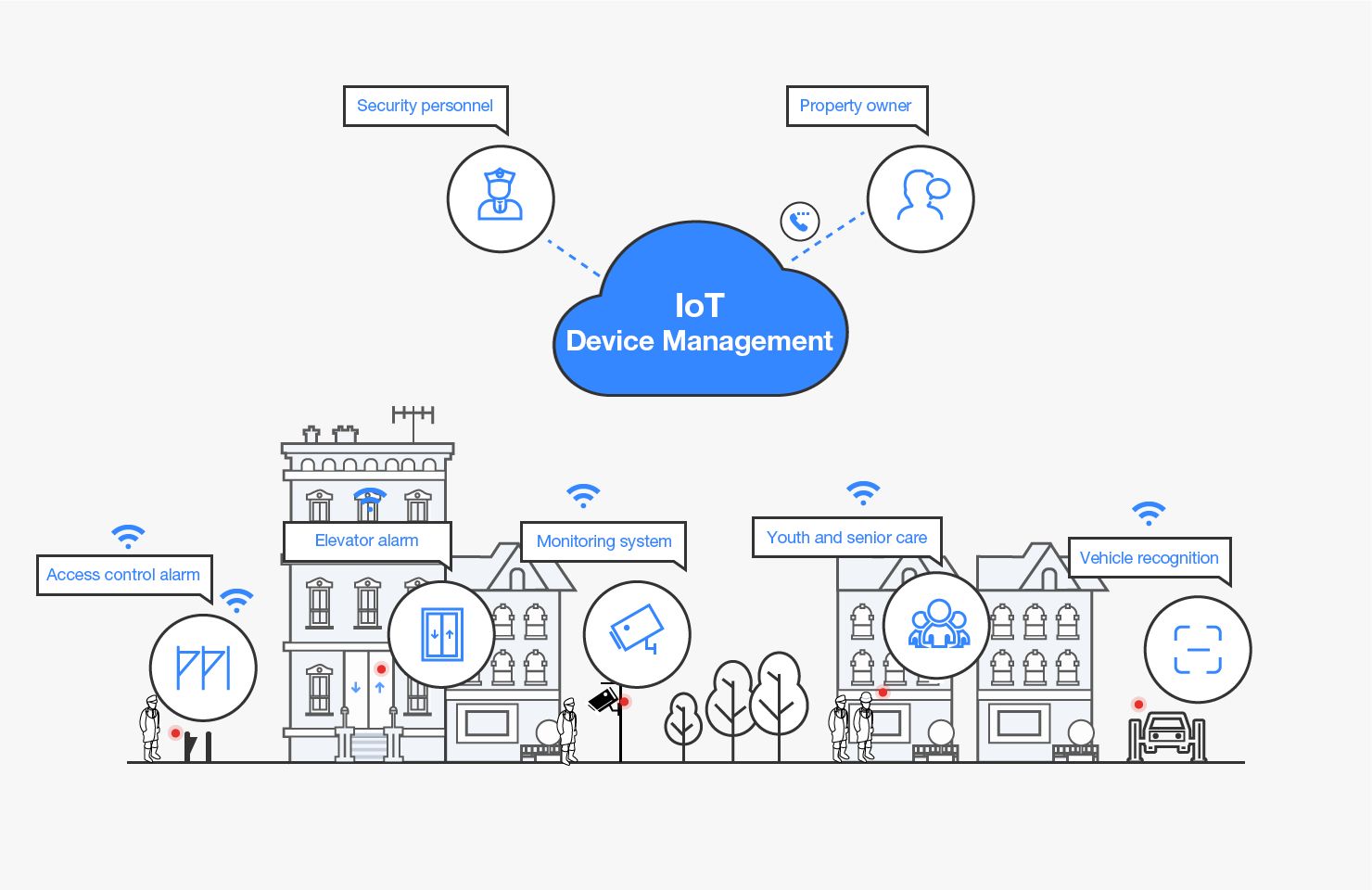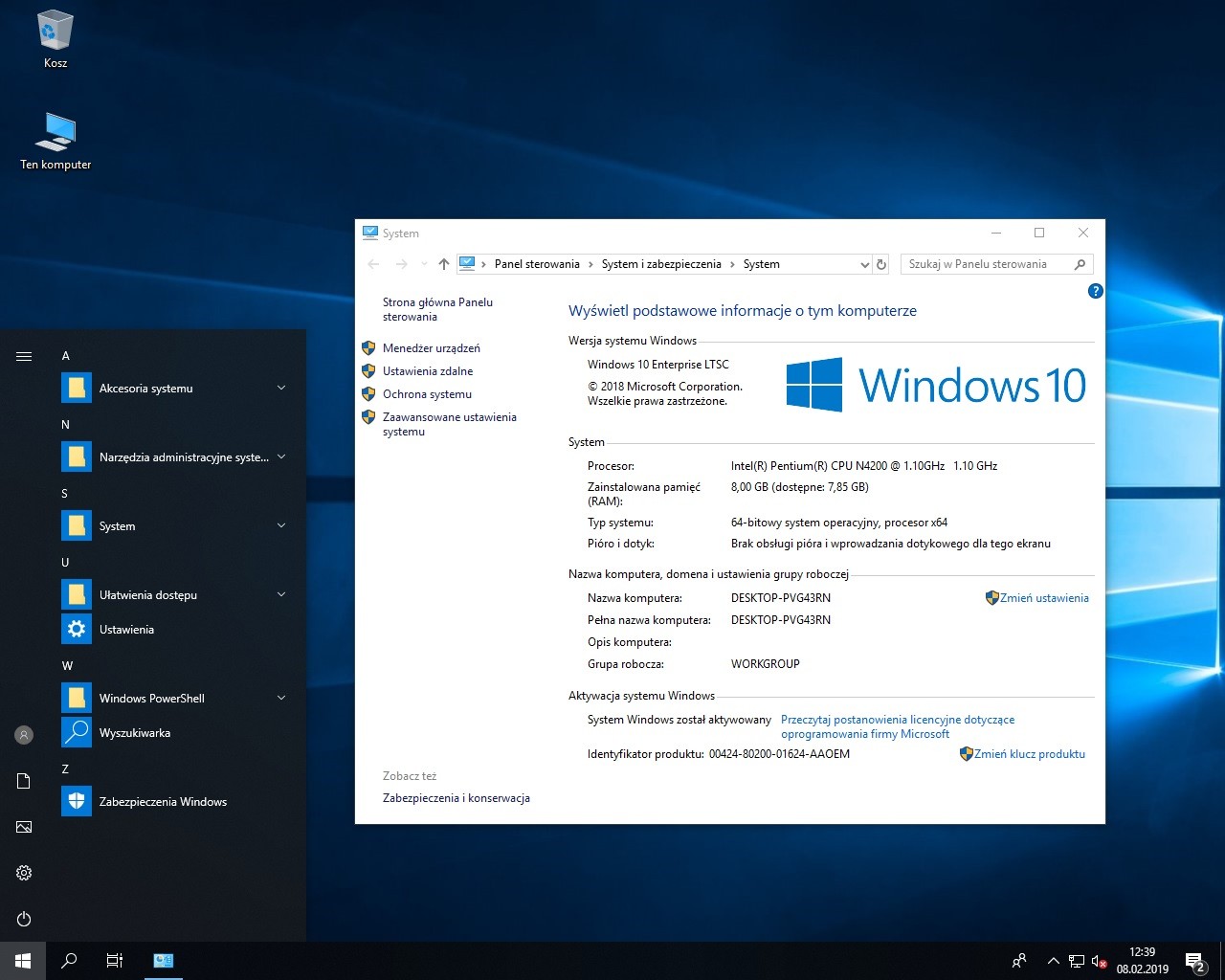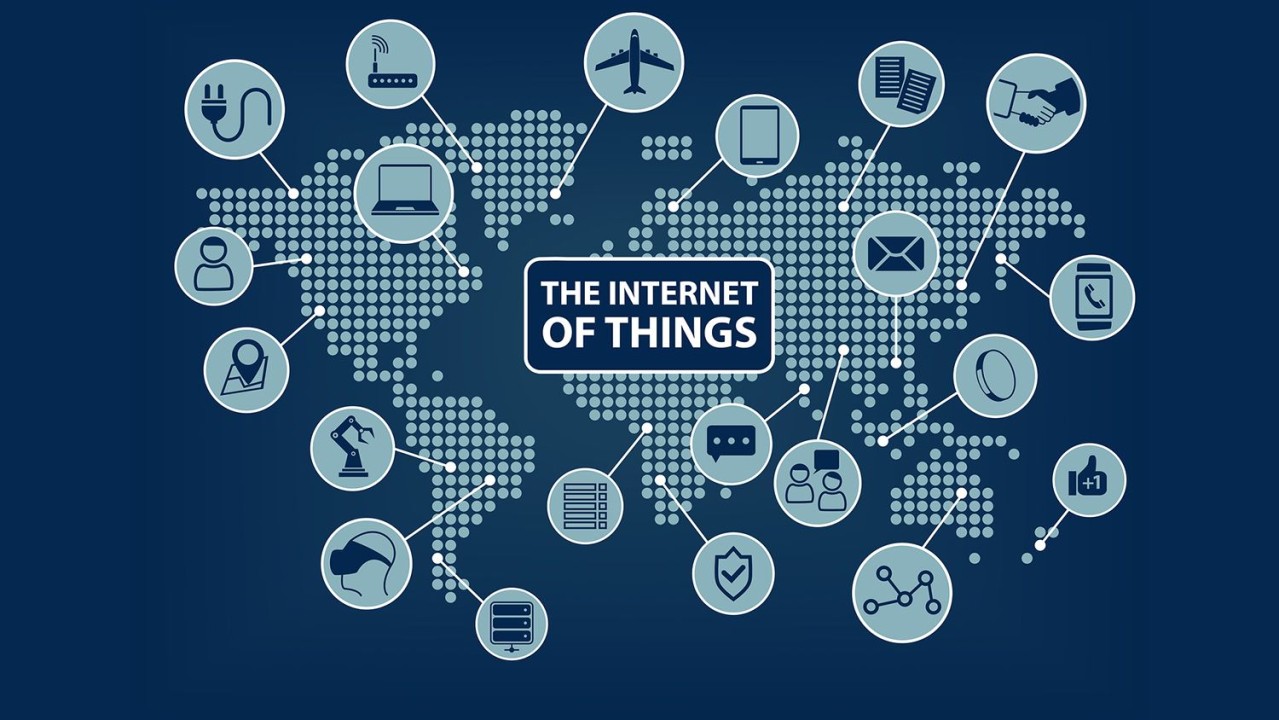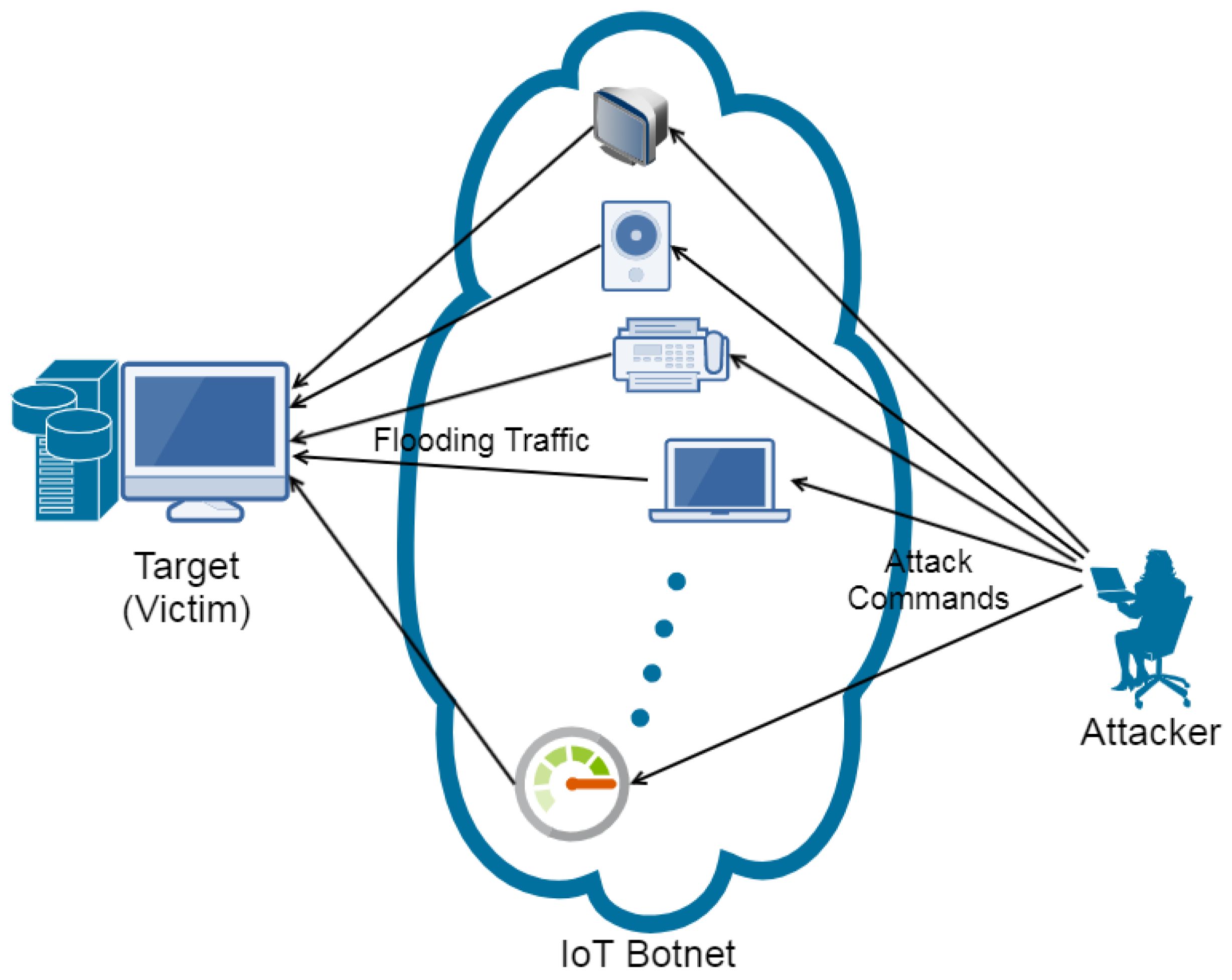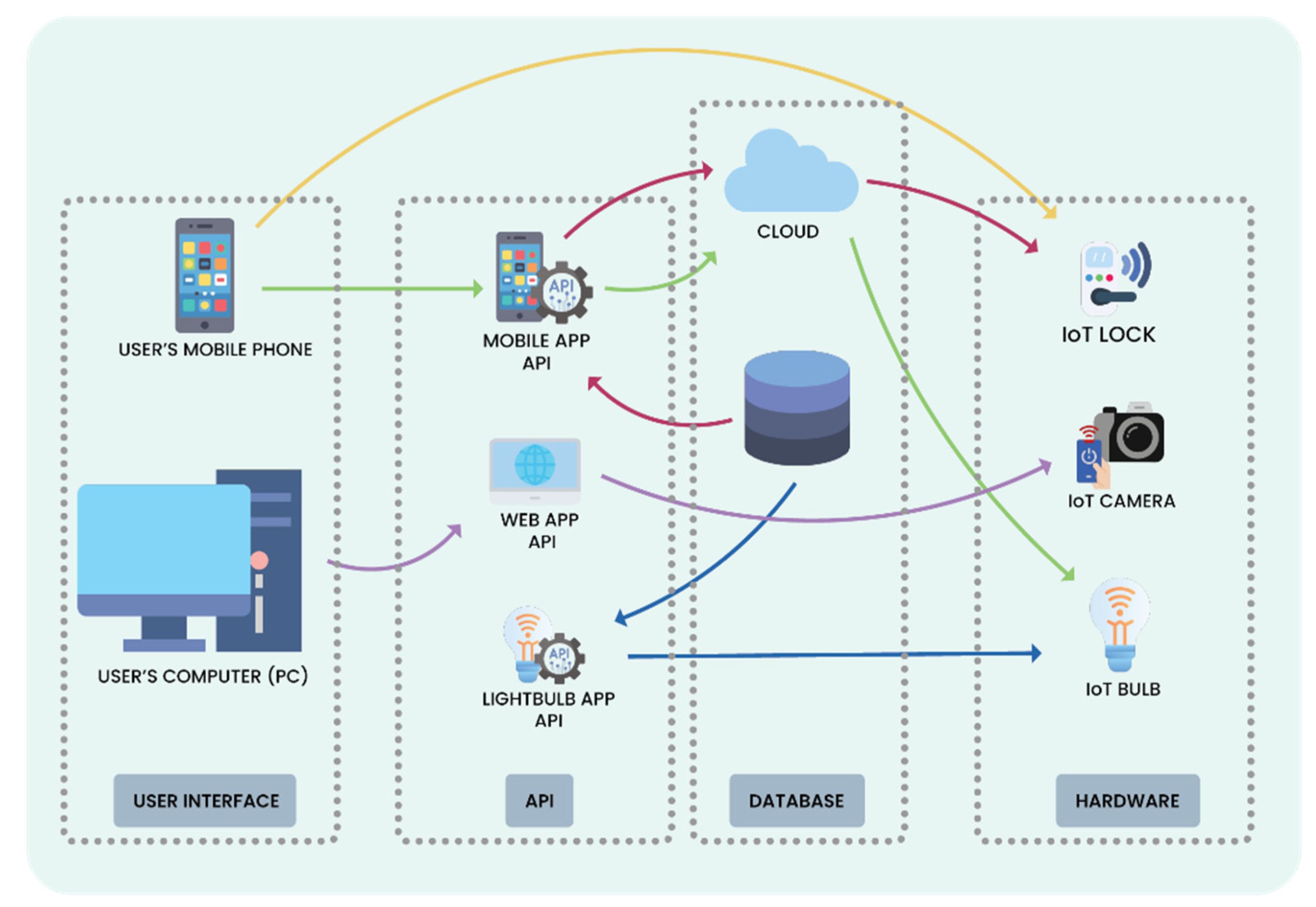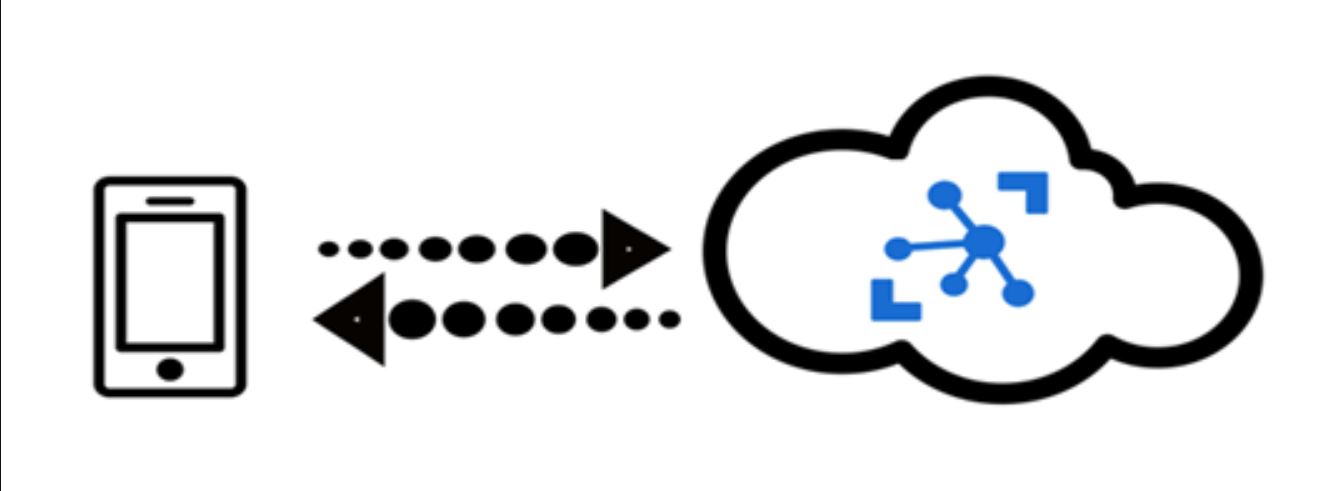Introduction
As the world becomes increasingly connected, the Internet of Things (IoT) has become an integral part of our lives. From smart homes to industrial automation, IoT devices play a crucial role in our everyday activities. However, with the rapid advancement of technology, these devices can quickly become outdated or vulnerable to security threats.
Updating IoT devices is not just about adding new features; it is also about ensuring the security and reliability of these devices. Regular updates help to address vulnerabilities, fix bugs, and improve overall performance. By keeping your IoT devices up to date, you not only benefit from the latest features but also safeguard your data and privacy.
In this article, we will guide you through the process of updating your IoT devices effectively. We will discuss the steps you need to take, the importance of firmware updates, and best practices to ensure the smooth operation of your devices.
So, whether you own a smart home system, wearables, or manage an industrial IoT network, this guide will provide you with the knowledge and tools to keep your devices up to date and secure. Let’s dive into the process and take control of your IoT devices.
Step 1: Understand the Importance of Updating IoT Devices
Before we delve into the technical aspects of updating your IoT devices, it is crucial to understand why keeping them up to date is of utmost importance. Updating your devices is not just a matter of convenience or feature enhancements; it is vital for the security and functionality of your IoT ecosystem.
1. Security: The primary reason for updating IoT devices is to address security vulnerabilities. As technology advances, so do the tactics employed by hackers and malicious actors. By keeping your devices updated, you ensure that they have the latest security patches and fixes. Failure to update exposes your devices to potential breaches, unauthorized access, and data leaks.
2. Bug Fixes and Performance Enhancements: Updates also address any bugs or performance issues that may arise in your IoT devices. Manufacturers constantly monitor and analyze customer feedback, bug reports, and performance metrics to identify and rectify any glitches or shortcomings. By updating your devices, you benefit from a smoother and more reliable user experience.
3. New Features and Enhancements: Along with security patches and bug fixes, updates often introduce new features and functionalities to enhance your IoT experience. This could include improved usability, additional automation capabilities, or integration with other smart devices. Regularly updating your devices ensures that you have access to the latest innovations and improvements.
4. Compatibility: As technology evolves, the software and protocols used in IoT devices may change. Regular updates ensure that your devices remain compatible with other devices, operating systems, or platforms in your IoT ecosystem. This compatibility ensures seamless communication, interoperability, and integration.
By understanding the significance of updating your IoT devices, you can make informed decisions about when and how to update them. In the following steps, we will explore the necessary actions and precautions to take to keep your devices up to date securely. So let’s move on to the next step: determining which devices need to be updated.
Step 2: Determine What Devices Need to be Updated
Keeping all your IoT devices updated can be a daunting task, especially if you have multiple devices spread across different locations. However, it is essential to identify which devices require updates to prioritize your efforts effectively. Here are some steps to help you determine what devices need to be updated:
1. Review Manufacturer’s Documentation: Start by referring to the manufacturer’s documentation for each device. Most manufacturers provide instructions on how to check for updates and firmware versions. Look for any specific recommendations or requirements for updating the devices.
2. Check Device Firmware: Access the settings or management interface of each device to check the firmware version. In most cases, manufacturers provide an option to view the current firmware version and check for updates. Make a list of devices with outdated firmware or pending updates.
3. Research Known Vulnerabilities: Stay informed about any reported vulnerabilities for your specific devices. Check security bulletins, online forums, and manufacturer websites for any known security issues. If a vulnerability exists and has been patched in a firmware update, prioritize updating those devices.
4. Consider Device Age and Support: Older devices may have limited support from manufacturers. Evaluate the age of the device and check for any end-of-life or end-of-support announcements. If a device is no longer receiving updates or support, consider replacing it with a newer model.
5. Consider Device Importance and Connectivity: Assess the role and criticality of each device in your IoT ecosystem. Devices that handle sensitive data or have higher connectivity may require more frequent and timely updates. Prioritize these devices to ensure the security and integrity of your overall system.
6. Evaluate Device Functionality: Consider how updates may impact the functionality or compatibility of each device. Some updates may introduce new features but also require additional configuration or integration. Make sure the updates align with your requirements and capabilities.
By following these steps, you can identify the devices that need immediate attention. This allows you to focus your efforts on updating the most critical devices first. Once you have determined which devices need updates, it’s time to move on to the next step: checking for firmware updates.
Step 3: Check for Firmware Updates
Once you have determined which devices in your IoT ecosystem need updates, the next step is to check for firmware updates. Firmware is the software that is embedded in the device’s hardware and controls its functionality. Here’s how you can check for firmware updates:
1. Manufacturer’s Website: Visit the manufacturer’s website and navigate to the support or downloads section. Look for firmware updates specifically for your device model. Download the latest firmware version and follow the manufacturer’s instructions for installation.
2. Device Management Interface: Access the device’s management interface through a web browser or mobile application. Look for a “Check for Updates” or similar option within the settings. Click on it to initiate a search for available firmware updates. If updates are found, follow the on-screen instructions to proceed with the installation.
3. Automated Notifications: Some devices may have a built-in mechanism to check for updates automatically. Enable this feature in your device’s settings if available, and keep an eye out for any automated notifications regarding firmware updates.
4. Subscribe to Manufacturer Updates: Subscribe to the manufacturer’s newsletter or follow their official social media channels for the latest news and updates. Manufacturers often announce firmware updates through these channels, providing you with timely information on available updates.
5. Third-Party Tools: Some third-party tools and applications can help you automate the process of checking for firmware updates across multiple devices. Research and select a tool that is compatible with your devices and meets your specific requirements.
It is important to note that firmware updates can be a critical part of ensuring the performance, security, and stability of your IoT devices. Therefore, it is recommended to follow manufacturer guidelines and best practices when installing firmware updates. Ensure that you have a stable and uninterrupted power supply during the update process to prevent any potential issues.
Once you have successfully installed the necessary firmware updates, you can proceed to the next step: updating devices using the manufacturer’s software.
Step 4: Update Devices Using Manufacturer’s Software
Updating your IoT devices often involves using the manufacturer’s software or dedicated tools designed to facilitate the update process. Here are the steps to update your devices using the manufacturer’s software:
1. Download the Software: Start by downloading the manufacturer’s software or tool from their official website. Ensure that you are downloading the correct software version that corresponds to your device model and firmware.
2. Install the Software: Once the software is downloaded, follow the installation instructions provided by the manufacturer. This may involve running an installer or extracting the software to a specific location on your computer.
3. Connect the Device: Connect your IoT device to your computer using the appropriate connection method, such as USB, Ethernet, or Wi-Fi. Refer to the device’s user manual or the manufacturer’s instructions for the specific connection requirements.
4. Launch the Software: Open the manufacturer’s software that you installed in the previous step. The software should provide a user-friendly interface with options to manage and update your device.
5. Check for Updates: Within the software, look for an option to check for updates or perform a firmware update. Click on this option to initiate the update process. The software will communicate with the device to check for available updates.
6. Follow the Update Instructions: If updates are found, the software will guide you through the update process. This may include reviewing and accepting terms and conditions, selecting the specific updates to install, and confirming the update initiation.
7. Monitor the Update Process: During the update process, carefully monitor the progress indicators provided by the software. Do not interrupt or disconnect the device from the computer until the update process is complete. Depending on the device and firmware size, the update may take several minutes or longer.
8. Restart the Device: Once the update is complete, the software will prompt you to restart the device to apply the changes. Follow the instructions provided by the software to reboot the device.
9. Verify the Update: After restarting the device, verify that the firmware update was successful. Check the device’s settings or management interface to ensure that the updated firmware version is reflected.
By following these steps and using the manufacturer’s software, you can ensure that your IoT devices are updated with the latest firmware versions. This step is crucial for improving performance, addressing security vulnerabilities, and accessing new features. Now, let’s move on to the next step: setting up automatic updates.
Step 5: Set Up Automatic Updates
One of the most effective ways to ensure that your IoT devices stay up to date is to set up automatic updates. By enabling automatic updates, you can automate the process of checking for and installing firmware updates. This helps to keep your devices secure and up to date with minimal effort. Here’s how you can set up automatic updates:
1. Check Device Settings: Start by exploring the settings of your IoT devices to see if there is an option for automatic updates. Some devices may have a dedicated section or toggle to enable automatic updates, while others may have it listed within the general settings.
2. Enable Automatic Updates: Once you have located the automatic update option, enable it. This allows your devices to periodically check for new firmware updates and install them automatically without any manual intervention.
3. Choose Update Frequency: Depending on the device settings, you may have the option to select the frequency at which updates are checked and installed. Common options include daily, weekly, or monthly updates. Choose a frequency that suits your preferences and requirements.
4. Schedule Maintenance Windows: Some devices may allow you to set specific maintenance windows during which the updates will be installed. This is particularly useful if you want to avoid disruption during critical work hours or when your device usage is high. Set the maintenance windows according to your needs.
5. Receive Notifications: Enable notifications to be alerted whenever a firmware update is installed. This allows you to stay informed about the updates and any changes that might occur after an update. Notifications serve as a reminder to check the device’s functionalities and settings after the update.
6. Regularly Check for Updates: Although automatic updates are effective, it is still important to periodically check your devices to ensure that updates are being installed correctly. Occasionally, updates may fail, or certain devices may not yet have automatic update capabilities. Manual checks can help address these situations.
By setting up automatic updates, you establish a proactive approach to keeping your IoT devices updated. Regular and automated firmware updates significantly enhance the security, stability, and performance of your devices. Now that you have automatic updates in place, let’s explore another aspect: using security patches and bug fixes to further strengthen your IoT devices.
Step 6: Use Security Patches and Bug Fixes
To ensure the security and reliability of your IoT devices, it is crucial to actively apply security patches and bug fixes. These updates address known vulnerabilities and software issues, helping to fortify your devices against potential threats. Here is how you can effectively use security patches and bug fixes:
1. Stay Informed: Keep track of security bulletins and notifications from device manufacturers and software vendors. Stay updated on any reported vulnerabilities or patches related to your specific devices. Subscribe to relevant mailing lists or follow official channels to ensure you receive timely information.
2. Review Release Notes: Before applying security patches or bug fixes, carefully read the release notes provided by the manufacturer. The release notes usually contain information about the vulnerabilities addressed, improvements made, and any known issues that may arise after applying the patches.
3. Create a Backup: Just in case something goes wrong during the update process, it is always advisable to create a backup of your device’s settings and files. This ensures that even if there is an issue with the update, you can restore your device to its previous state without losing valuable data.
4. Follow Update Instructions: Manufacturers typically provide instructions on how to apply the security patches or bug fixes. Follow these instructions carefully to ensure a successful update. This may involve downloading specific software or files, connecting your device to a computer, or utilizing an over-the-air (OTA) update method.
5. Test After Updates: After applying the security patches or bug fixes, thoroughly test your device to ensure that everything is functioning correctly. Check all important features, connections, and interfaces. Report any issues or unexpected behavior to the manufacturer or support team for further assistance.
6. Periodic Check for Updates: Security vulnerabilities can emerge at any time, so it is important to periodically check for new security patches or bug fixes. Set a schedule to review and apply updates regularly, ensuring that your devices are always protected against newly discovered vulnerabilities.
By proactively applying security patches and bug fixes, you significantly reduce the risk of your IoT devices being compromised. Keeping up with updates demonstrates a commitment to security and helps to maintain the integrity of your IoT ecosystem. Now that you are familiar with security updates, let’s move on to the next step: keeping track of updates and device maintenance.
Step 7: Keep Track of Updates and Device Maintenance
To ensure that your IoT devices remain updated and in optimal condition, it is important to establish a system for keeping track of updates and device maintenance. This step helps you stay organized and proactive in managing your devices. Here are some tips to effectively keep track of updates and device maintenance:
1. Maintain an Inventory: Create an inventory of all the IoT devices in your ecosystem. Include important details such as device name, model, manufacturer, firmware version, and last update date. This inventory will serve as a reference point for tracking updates and monitoring device maintenance.
2. Set Reminders or Alerts: Utilize reminders or calendar alerts to notify you when it is time to check for updates or perform maintenance on your devices. This can be done manually or through task management applications to ensure that important tasks are not overlooked.
3. Follow Manufacturer Notifications: Stay subscribed to manufacturer newsletters, user forums, or official social media channels. Manufacturers often notify users about firmware updates, important announcements, or upcoming maintenance requirements. Keeping track of these notifications helps you stay informed and take necessary action.
4. Create a Maintenance Schedule: Establish a regular maintenance schedule to perform routine checks and updates on your devices. This schedule can include tasks such as firmware updates, security audits, battery or power source checks, and physical inspections of the devices.
5. Document Maintenance Activities: Keep a record of all maintenance activities performed on your devices. This documentation should include the date of maintenance, specific tasks performed, any issues encountered, and the resolution steps taken. This record will help track the history of device maintenance and troubleshooting efforts.
6. Keep Firmware Update Files: For each device, keep a backup of the firmware update files used during the update process. This ensures that you have easy access to the specific firmware version should you need to rollback or reinstall it in the future.
7. Periodically Review and Update: Regularly review and update your device inventory, maintenance schedule, and documentation. This ensures that your records stay accurate and up to date.
By implementing these practices, you can effectively keep track of updates and device maintenance, ensuring that your IoT devices remain secure, functional, and up to date. Now, let’s move on to the final step: best practices for updating your IoT devices.
Step 8: Best Practices for Updating IoT Devices
Updating your IoT devices is a critical task that should be done with care and following best practices. By following these best practices, you can ensure a smooth and secure update process for your devices. Here are some key best practices to keep in mind:
1. Backup Your Data: Before updating any device, always take a backup of your important data and settings. This ensures that even if something goes wrong during the update process, you can recover your data without any major loss.
2. Ensure Sufficient Power: Make sure your IoT devices have a stable and uninterrupted power supply during the update. Power interruptions or failures during the update process can cause the device to become corrupt or malfunction. Use a battery backup or connect the device to a reliable power source.
3. Use Secure Connections: When connecting to online sources for firmware updates, use secure and trusted networks. Avoid using public or unsecured Wi-Fi networks that can expose your device to potential security risks.
4. Read Release Notes: Always read the release notes and documentation provided by the manufacturer before updating your devices. This will help you understand the changes, improvements, and known issues associated with the update.
5. Update in Stages: If you have a large number of devices, consider updating them in stages rather than all at once. This allows you to monitor the update process and identify any issues that may arise before updating the rest of the devices.
6. Test After Updates: After updating your IoT devices, thoroughly test their functionality and compatibility with other connected devices or systems. Ensure that all previously working features are still functioning correctly, and troubleshoot any issues that may arise.
7. Stay Informed: Continuously educate yourself about emerging security threats, updates, and best practices for IoT devices. Stay up to date with the latest developments by following trusted security websites, newsletters, and forums.
8. Maintain a Patch Management Plan: Develop a patch management plan that outlines the process for implementing updates across your IoT devices. This plan should include automated update schedules, testing procedures, and a means to track and document update activities.
By adhering to these best practices, you can ensure that your IoT devices are updated securely and efficiently. Regular updates and the adoption of best practices are essential for maintaining the integrity and security of your IoT ecosystem.
Conclusion
Updating your IoT devices is vital for their security, reliability, and functionality. By following the steps outlined in this guide, you can ensure that your devices are up to date and protected against potential vulnerabilities and threats.
We began by emphasizing the importance of keeping your devices updated and understanding the significance of firmware updates. We then discussed how to determine which devices need updates and how to check for firmware updates using the manufacturer’s software. Additionally, we covered the process of setting up automatic updates and using security patches and bug fixes to further strengthen your devices.
Moreover, we explored the significance of keeping track of updates and device maintenance, which helps you stay organized and proactive in managing your IoT devices. Finally, we highlighted the best practices for updating your devices, including backing up your data, ensuring a sufficient power supply, and staying informed about emerging security threats and updates.
By following these steps and best practices, you can effectively keep your IoT devices secure, reliable, and up to date. Regular updates, along with a proactive approach to maintenance and security, will help you maximize the benefits of your IoT ecosystem while minimizing any potential risks.
Remember, the world of IoT is constantly evolving, and new vulnerabilities and updates may emerge. Therefore, it is crucial to stay vigilant and remain proactive in keeping your devices updated. By doing so, you can ensure the longevity, performance, and security of your IoT devices for years to come.









